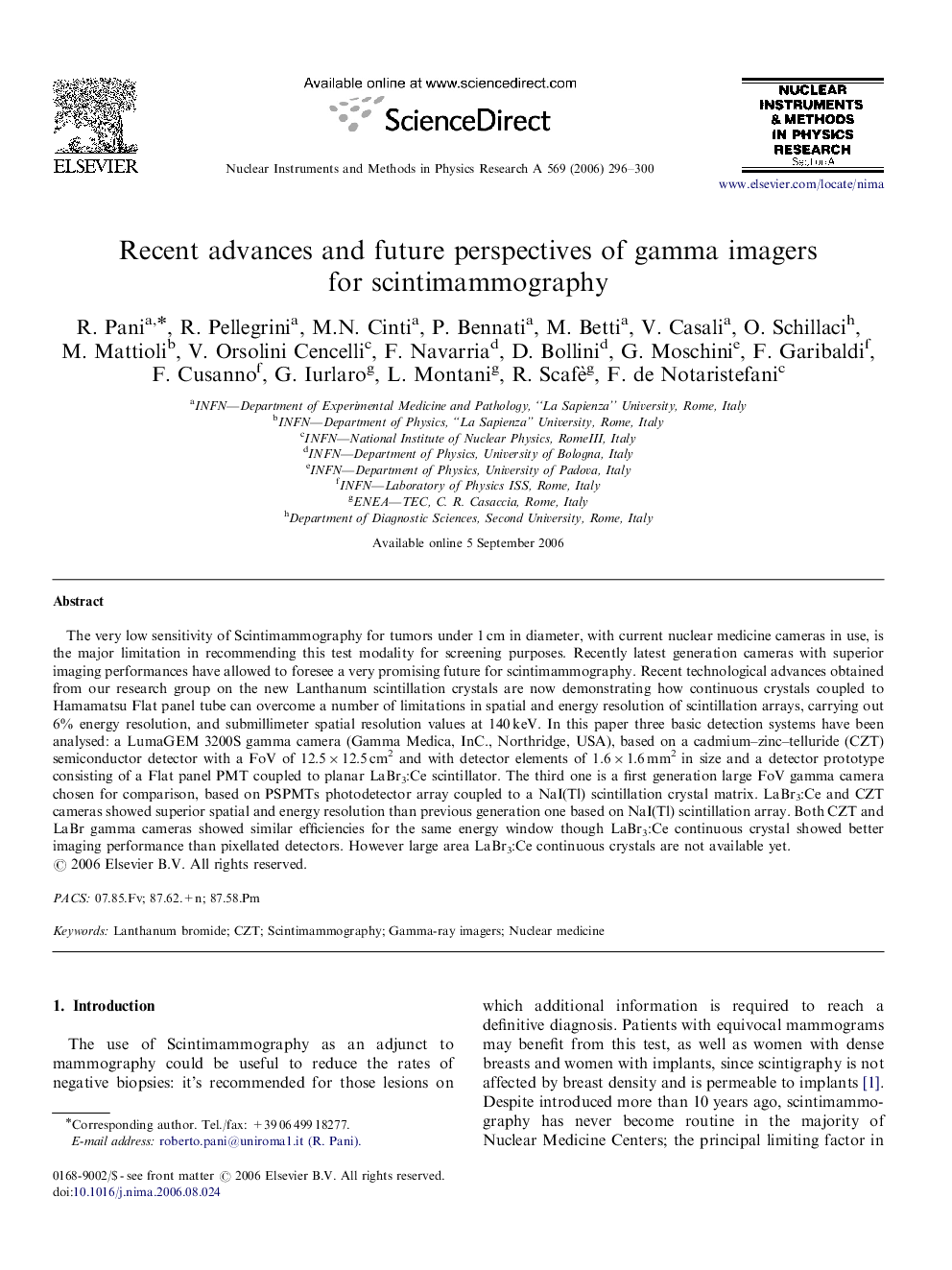| Article ID | Journal | Published Year | Pages | File Type |
|---|---|---|---|---|
| 1832321 | Nuclear Instruments and Methods in Physics Research Section A: Accelerators, Spectrometers, Detectors and Associated Equipment | 2006 | 5 Pages |
The very low sensitivity of Scintimammography for tumors under 1 cm in diameter, with current nuclear medicine cameras in use, is the major limitation in recommending this test modality for screening purposes. Recently latest generation cameras with superior imaging performances have allowed to foresee a very promising future for scintimammography. Recent technological advances obtained from our research group on the new Lanthanum scintillation crystals are now demonstrating how continuous crystals coupled to Hamamatsu Flat panel tube can overcome a number of limitations in spatial and energy resolution of scintillation arrays, carrying out 6% energy resolution, and submillimeter spatial resolution values at 140 keV. In this paper three basic detection systems have been analysed: a LumaGEM 3200S gamma camera (Gamma Medica, InC., Northridge, USA), based on a cadmium–zinc–telluride (CZT) semiconductor detector with a FoV of 12.5×12.5 cm2 and with detector elements of 1.6×1.6 mm2 in size and a detector prototype consisting of a Flat panel PMT coupled to planar LaBr3:Ce scintillator. The third one is a first generation large FoV gamma camera chosen for comparison, based on PSPMTs photodetector array coupled to a NaI(Tl) scintillation crystal matrix. LaBr3:Ce and CZT cameras showed superior spatial and energy resolution than previous generation one based on NaI(Tl) scintillation array. Both CZT and LaBr gamma cameras showed similar efficiencies for the same energy window though LaBr3:Ce continuous crystal showed better imaging performance than pixellated detectors. However large area LaBr3:Ce continuous crystals are not available yet.
